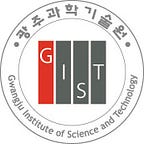More than meets the eye (of the storm): Typhoons in Korea amplified wildfires in America
Study shows that cyclones could affect seemingly unrelated weather disasters in an entirely different continent
In August 2020, the Korean peninsula was hit by 3 devastating typhoons. A recent study by a team of scientists from Korea and the U.S. reveals that these typhoons played a role in the wildfires in Oregon, thousands of miles away. The extreme changes in weather patterns caused by these typhoons reiterate that the consequences of natural disasters are far-reaching and not always limited to the origin.
The year 2020 played host to an uncharacteristically large number of natural disasters. The year began with large wildfires in the Amazon rainforest and Australia. A series of wildfires broke out in the American states of California during summer and Oregon in September 2020. In particular, the Oregon wildfire intensified to an uncontrollable extent and was spread over a wide area by strong gusts of wind that carried it forward. These unseasonably strong winds may have been stoked by an unexpected source: typhoons on the other side of the Pacific Ocean.
In late August and early September, three storms — Bavi, Mayask, and Haishen — occurred just two weeks apart in the Korean peninsula, causing floods, mudslides, and several casualties. In a recently published article in Geophysical Research Letters, evidence was presented that these storms had more than enough energy to perturb the jet stream — creating an atmospheric “wave train” that amplified weather conditions, which increased the likelihood of wildfires in North America. This evidence was discovered by an international team led by Associate Professor Jin-Ho Yoon from Gwangju Institute of Science and Technology, Korea, and Prof. Shih-Yu (Simon) Wang from Utah State University.
Commenting on their findings, Dr. Yoon states, “Typhoon Haishen prolonged the initial fire spread and maintained anomalously hot and dry conditions in California and extreme wind events in Oregon.” “One typhoon of this magnitude would not be unusual in Korea each year,” said co-author Prof. Wang, “But three in two weeks? That was quite historic.”
How could a typhoon that hit Korea affect weather in America? Dr. Yoon explains that the outflow from the three typhoons amplified an atmospheric “wave train,” creating a reverse air flow across the Pacific by shifting a climatologically west wind regime to an east wind regime. It also increased the pressure gradient across Western America, such that the atmospheric pressure was at an all-time low in the last 40 years.
The team’s findings show how weather-related disasters, often thought to be confined to a smaller geographical region, have a “domino effect,” causing effects that snowball into larger disasters even over an ocean away.
Reference
Authors: Jacob Stuivenvolt Allen (1), S.-Y. Simon Wang, Matthew D. LaPlante (2), Jin-Ho Yoon (3)
Title of original paper: Three western pacific typhoons strengthened fire weather in the recent northwest U.S. conflagration
Journal: Geophysical Research letters
DOI: 10.1029/2020GL091430
Affiliations:
1- Department of Plants, Soils and Climate, Utah State University, Logan, UT, USA
2- Department of Journalism and Communication, Utah State University, Logan, UT, USA
3- School of Earth Sciences and Environmental Engineering, Gwangju Institute of Science and Technology, Gwangju, South Korea
About Gwangju Institute of Science and Technology (GIST)
Gwangju Institute of Science and Technology (GIST) is a research-oriented university situated in Gwangju, South Korea. One of the most prestigious schools in South Korea, it was founded in 1993. The university aims to create a strong research environment to spur advancements in science and technology and to promote collaboration between foreign and domestic research programs. With its motto, “A Proud Creator of Future Science and Technology,” the university has consistently received one of the highest university rankings in Korea.
Website: http://www.gist.ac.kr/
About Dr. Jin-Ho Yoon from GIST
Dr. Jin-Ho Yoon is an Associate Professor of School of Earth Sciences and Environmental Engineering at Gwangju Institute of Science and Technology (GIST). Dr. Yoon received his Ph.D. from Iowa State University. Dr. Yoon’s research group focuses on extreme weather and climate phenomena around the world and their causes, impact, and predictability.
